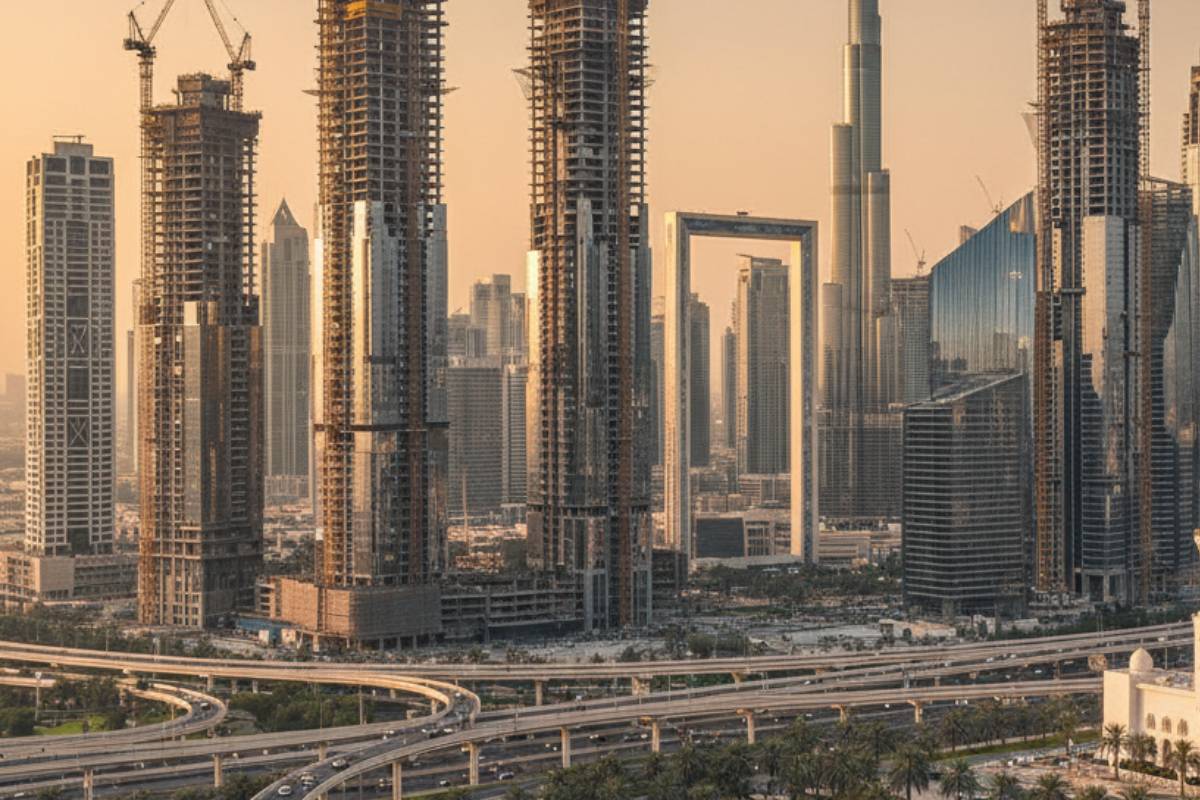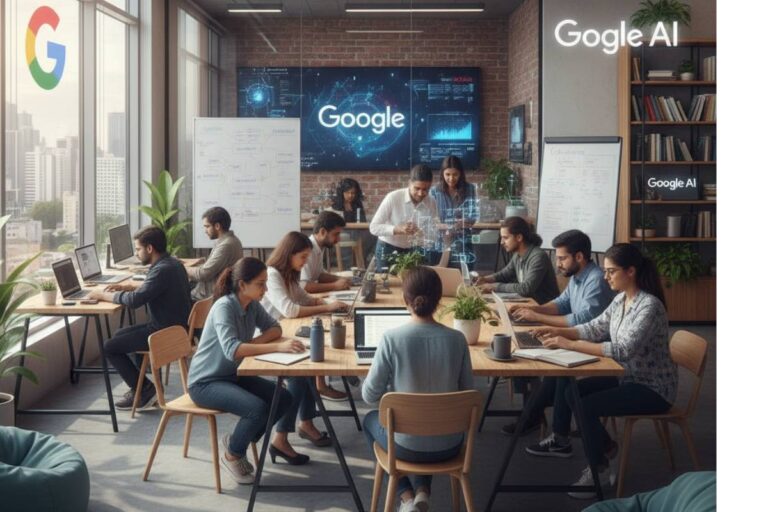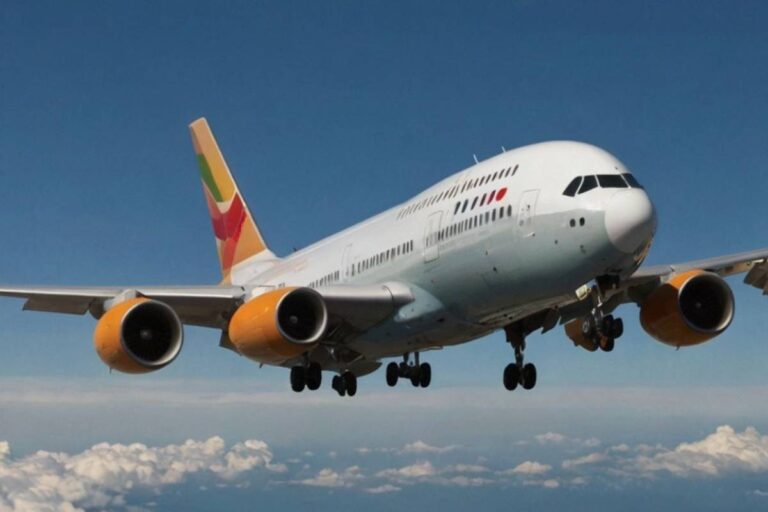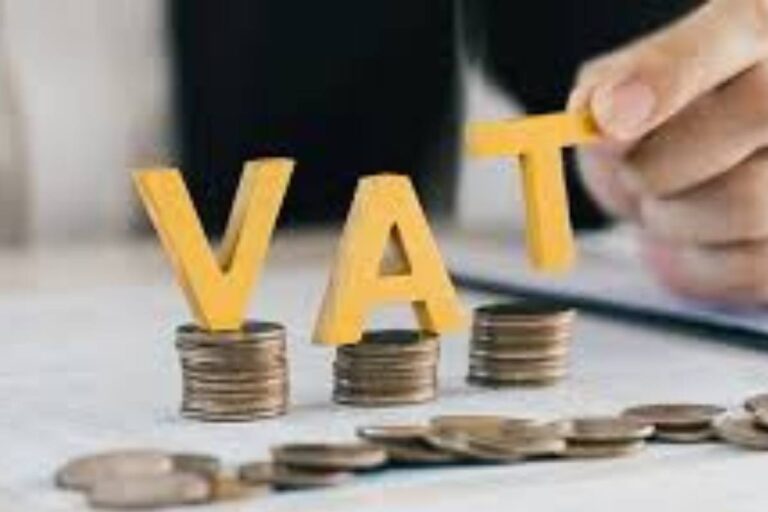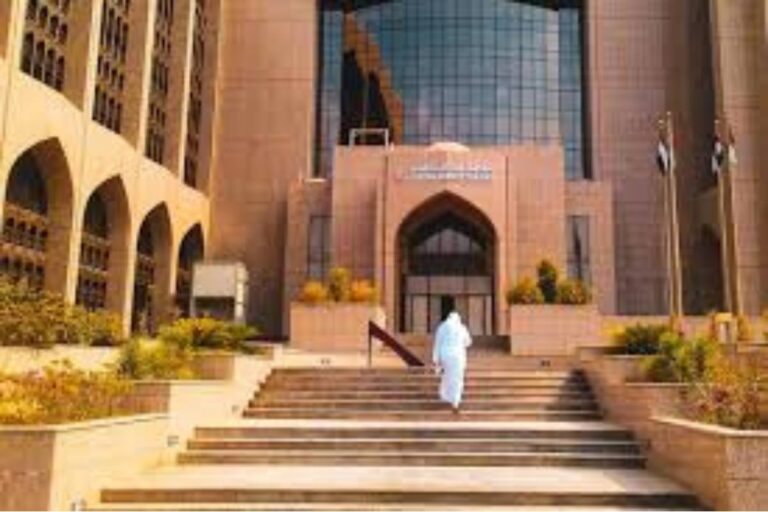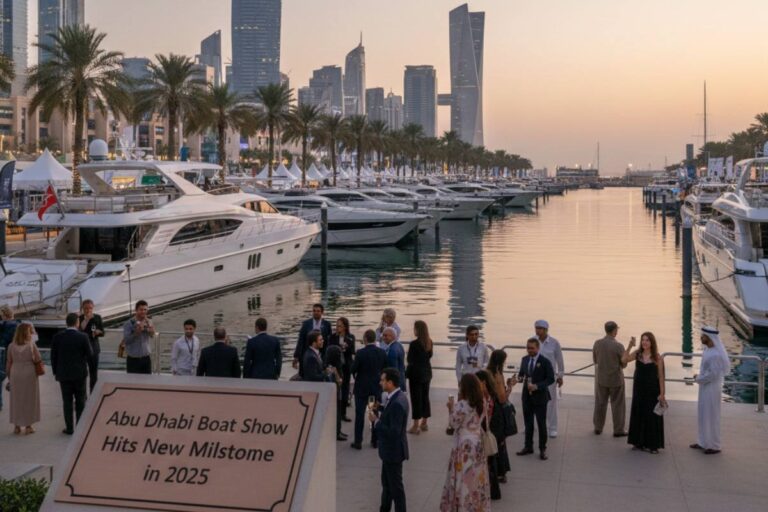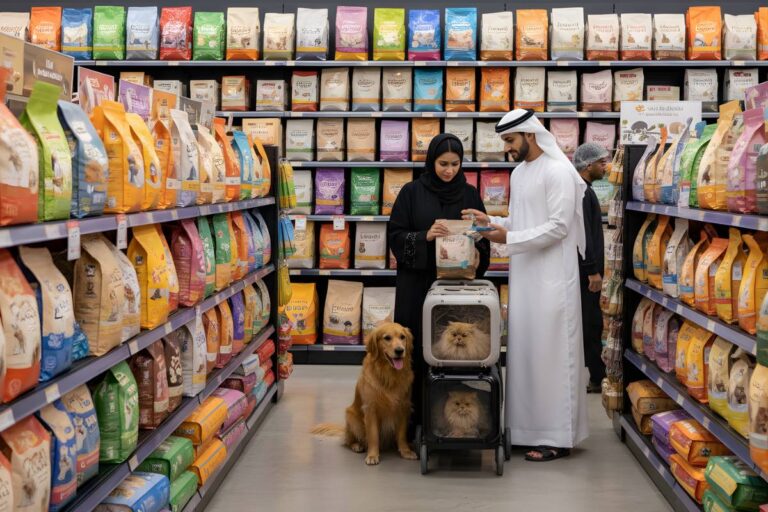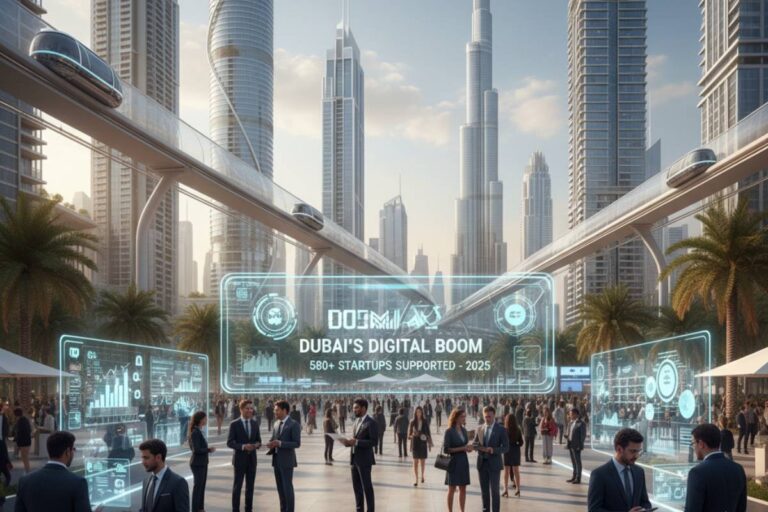The construction industry in the United Arab Emirates is about to see some amazing growth. According to a recent report from global consulting firm Knight Frank, output will rise by 22% over the next five years, reaching an impressive $130.8 billion by 2029.
This isn’t just another building boom; it’s a major change in the economy of the Emirates. This change is happening because the country is trying to move away from relying on oil and has big plans for the future that will change the region.
Strong Base from Current Market Performance
In 2024, the construction industry made a record-breaking $107.2 billion in output, which set a strong base for future growth. This strong performance shows how strong the industry is and how well government-led programs are working in all the Emirates.
The annual growth forecasts show that the economy will grow steadily at a rate of about 4% per year until 2029. This steady growth path shows that the sector is stable, unlike speculative bubbles that have hurt construction markets in the past.
The momentum is building on big investments in infrastructure that are already happening. Abu Dhabi is in charge of 619 infrastructure projects worth more than AED 200 billion ($54.5 billion). These projects focus on building smart cities that make life better and more sustainable.
Project Pipeline Dominance Across Key Sectors
Construction makes up 62% of all planned projects in the UAE’s future development pipeline. This huge majority shows that there is still demand in many areas and sectors.
- Transportation projects: 12% of the pipeline
- Power generation: 7%
- Water infrastructure: 5%
These percentages show how broad the development efforts are, which include both improvements to the quality of life and basic infrastructure.
Within the construction pipeline itself, mixed-use developments lead at 42%, followed by:
- Residential projects: 28%
- Data centers: 9%
- Hospitality ventures: 4%
This mix of projects lowers market risk while covering a wide range of economic sectors.
Dubai-Abu Dhabi Dominance in Regional Distribution
Dubai and Abu Dhabi together make up 85% of the total contract value given out between 2020 and August 2025. During this time:
- Dubai: $129.9 billion in contracts
- Abu Dhabi: $151 billion in contracts
Dubai’s construction focus is very clear, as 75% of contract activity is in the building sector. Only 3% of Dubai’s awards go to oil and gas projects, which shows how well the emirate has been able to diversify its economy.
Abu Dhabi is different; construction makes up 23% of awarded contracts, while oil and gas projects make up 40%. This distribution shows that Abu Dhabi is still an energy hub while also building up its construction skills.
Economic Diversification is What Keeps Growth Going
The building boom is a sign of bigger changes in the economies of the Gulf Cooperation Council (GCC) countries. Through planned investments in infrastructure and efforts to diversify their economies, countries are systematically becoming less dependent on crude oil.
This change is possible because of national vision programs:
- The UAE’s “We the UAE 2031” plan
- Dubai’s D33 agenda
- The 2040 Urban Master Plan
- Abu Dhabi’s Vision 2030
All call for the growth of the construction industry.
The focus of economic diversification efforts is on the tourism, technology, logistics, and advanced manufacturing sectors. Each needs a lot of physical infrastructure, which means that construction will be needed for a long time after residential and commercial projects are done.
The Costs of Building Are Still Competitive Around the World
In the second quarter of 2025, the cost of building a home ranged from:
- Standard villas: AED 4,200 per square meter
- Luxury homes: AED 11,000 per square meter
- Apartments: AED 4,300 to AED 9,500 per square meter
In the first half of 2025, the average cost of building a commercial building was AED 5,500 to AED 7,300 per square meter. These numbers show that prices are competitive with those in other countries’ construction markets, which encourages more investment.
Cost competitiveness comes from having low input costs and supply chains that work well. This advantage lets developers quickly grow big projects while keeping profit margins that support long-term growth.
Big Infrastructure Projects Will Change the Way Things Look in the Future
The Blue Line will add 15 kilometers to Dubai’s metro system, and it is expected to be finished by 2029. This growth helps the emirate’s economy and population grow.
Under its Economic Vision 2030, Abu Dhabi wants to change its infrastructure:
- High-speed rail link to Dubai: 150 kilometers long, operational by 2030
- Planned metro system: 131 kilometers to help with urban growth
Upcoming developments include:
- Palm Jebel Ali
- The Oasis by Emaar
- Marsa Al Arab
- Therme Dubai
- Naia Island
- DAMAC Lagoons’ Venice community
The Dubai Hills Estate expansions add to the supply of homes.
Demand for Housing Reflects Predictions of Population Growth
The Urban Masterplan says that Dubai’s population will grow from 3.4 million in 2020 to 5.8 million by 2040. This 70% rise in demand for residential construction is huge.
In the first half of 2025, Abu Dhabi delivered 890 homes. There are about 33,074 homes being built that will be ready by 2029. 71% of this future supply pipeline will be apartments.
Residential construction makes up 28% of the total project pipeline, which shows that people still want to buy homes at all income levels. 42% of the pipeline is made up of mixed-use developments, which often include homes. This helps to increase the supply of housing.
There Will Be a Lot More Office Space Available Until 2028
Dubai expects to have about 8.2 million square feet of new office space by 2028, but there will probably be more demand than supply. This imbalance keeps construction going and rents stable.
Abu Dhabi’s office supply is set to grow by a huge amount, with almost 175,000 square meters planned for 2027. This is on top of smaller additions of:
- 2025: 51,000 square meters
- 2026: 43,000 square meters
The boom in office construction shows that the economy is diversifying, as businesses set up regional headquarters and operations centers. Companies that provide financial services, technology, and logistics are the ones that need office space.
Smart City Initiatives Push for Technology Integration
Building smart cities is a key part of the UAE’s construction evolution. Dubai wants to be one of the smartest cities in the world. To do this, it uses:
- Blockchain technology
- Going paperless
- Building networks that connect all of its smart devices
Abu Dhabi’s Masdar City is a great example of a sustainable smart city. It has:
- Buildings powered by solar energy
- Low-carbon cement
- 90% recycled aluminum construction
Through creative architectural design, the city keeps temperatures 15°C cooler than those in Abu Dhabi.
Between 2025 and 2029, the smart city market in the UAE is expected to grow by 9.58% each year, reaching $312.2 million. This growth shows that the company wants to be a regional hub for technological innovation.
The Regional Context Shows Construction Growth Across the Gulf
In 2024, the total amount of money awarded for construction projects in GCC countries was $75.4 billion. This regional momentum helps the UAE grow by sharing supply chains and knowledge.
By 2029, Saudi Arabia’s construction output is expected to reach $191 billion, which is a 29% increase from 2024. This parallel growth creates synergies and competitive pressures that help the whole construction ecosystem in the region.
In 2024, the Middle East construction market was worth $337.43 billion. By 2025, it is expected to be worth $361.60 billion. This growth in construction in the UAE is part of a larger growth in the region as a whole.
Tourism and Infrastructure Focus Are Two of the Things That Drive Investment
Investments in the tourism sector are a big reason why there is a lot of demand for construction. Hospitality projects make up 4% of the construction pipeline, but their effects on the economy go beyond just building.
Rail, road, and airport projects put a lot of money into the transportation infrastructure. The Sheikh Zayed double-deck road project is worth $2.7 billion in construction alone.
Energy and utilities infrastructure, which has a smaller percentage of pipelines, needs specialized construction skills and contracts worth a lot of money. Building data centers at 9% of the pipeline shows that the digital economy is growing.
Changing the Industry by Using Technology
Digital technologies and Building Information Modeling (BIM) are having a bigger and bigger impact on how buildings are built. The Internet of Things (IoT), artificial intelligence (AI), and drone applications all make projects run more smoothly and with better quality.
Modular construction and off-site fabrication yards are becoming more popular, especially in industrial areas of:
- Dubai
- Abu Dhabi
- Sharjah
These new ideas speed up construction and make quality control better.
Big contractors in Dubai and Abu Dhabi are starting to use AI-powered project management platforms. These technologies help make the best use of resources and cut down on project delays.
The 22% growth projection to $130.8 billion by 2029 is more than just a number; it shows that the UAE has successfully changed its economy from one that relies on oil to one that can grow in a variety of ways and be sustainable. The Emirates’ ambitious goal of becoming a global hub for innovation, tourism, and business excellence is being built on this construction boom.








